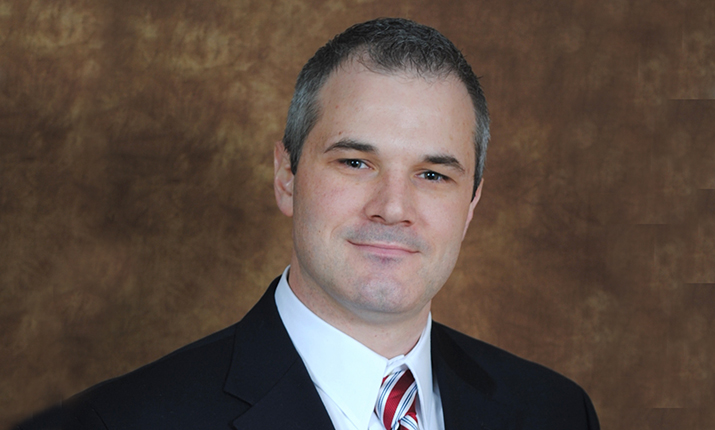SVG Sit-Down: GV President Tim Shoulders Says the Move to the Cloud Will Transform Creativity
A physical move consolidates the company’s manufacturing ops in Montreal
Story Highlights
Grass Valley President Tim Shoulders stepped into his new role in 2018, and, in the three years since, the company has undergone a tremendous transformation. Last July, it made the transition from public company to a private company after Black Dragon Capital acquired it from Belden. At just about the same time, the company made a move to cloud-first production tools via GV AMPP.
And now it is taking another transformative step: selling its original Grass Valley, CA, facility and moving the team there into leased office space.
All those moves are designed to help the company better serve customers, drive efficiencies, and chart a course for the future. Shoulders discussed those issues and more with SVG Co-Executive Director Ken Kerschbaumer.

Grass Valley’s Tim Shoulders: “We have had to make some bold changes to adapt to selling more virtualized solutions and accessing the power of elastic compute with cloud platforms.”
This week, you announced a $5 million deal with Gravity Media. Can you give a little more context to that deal and what it means?
Sure. We have been evolving in a lot of different ways, but one of those ways is our commercial approach. We have a broad portfolio of products, and we can leverage that in a lot of ways to put together good commercial models for customers that help them get more technology with less investment.
And also, we’re now privately held and less focused on the current quarter vs. the long-term transformation of the business. We have been working with customers to develop what we call enterprise agreements or long-term technology partnerships that give us some confidence in the volumes we’re going to sell into those customers. And it gives the customer access to our technology, economic benefits, of course, and certainly service and support benefits.
[The deal with Gravity Media] is the first agreement we’ve announced. But there are certainly more to come.
In the past year, more and more productions have moved toward virtualized systems, and that means it is less about selling gear and calling back after it is amortized. Will that change the nature of your relationships with customers?
Yes, and it’s the technologies that are the enabler, and the pressure is economics. Pre-COVID, the live-sports space has been one of the least impacted by economic pressures as the rights fees are high and the revenue is high. So the technology spend in that area has been one of the least scrutinized compared to, say, our customers that participate in news and entertainment.
One of the things I wanted to discuss was the decision to put the Grass Valley facility in Grass Valley on the market. Can you explain that?
We have had to make some bold changes as a company to be able to adapt to selling more virtualized solutions and, in particular, accessing the power of elastic compute with cloud platforms. Our business operational model needs to shift, and one [approach] was to consolidate manufacturing into our Montreal facility.
The trend for hardware products has been on the decline while the trend for software projects has been on the increase for the last few years. We reached an inflection point between those two and are consolidating our production in our state-of-the-art Montreal manufacturing facility.
That was one of the elements. The other element was just a rationalization of real estate around the world. Over time, we have combined several different independent companies, and we’ve collected our share of lease agreements and real estate.

Grass Valley’s production switcher R&D and support will remain in Grass Valley, CA, but will move to leased space.
If you were designing Grass Valley from the bottom up, you wouldn’t design it with the same real estate footprint that we have today. Our ethos is to keep employees that need to be in front of the customer as close to the customer as possible, and that includes not just commercial employees but also service and support employees that need to be at the customer to do integration or otherwise service an account.
We are making an effort to consolidate all the other functions into fewer facilities, so part of that rationalization of real estate is our Grass Valley, CA, facility, where we have had about 80 people the last several years. The major changes in that location have occurred in the past, but we’ve announced we’re going to shrink our workforce in Grass Valley substantially and move out of the building we’re in. What will be left in Grass Valley is basically research and development and support for the switchers line, so we will put the building on the market and then lease a small space for the switcher personnel to work.
Are people relocating to Montreal?
We will have jobs relocate, and we’re putting hardware jobs into Montreal so that they can be closer to where the hardware is manufactured. The synergy of having those folks in the manufacturing facilities is pretty powerful.
We’re consolidating our workforce into centers of excellence. We’ve got a location in each region, and we’re going to be focusing our efforts around expanding those locations. Montreal is one of them for North America. In Europe, we’re going to build out a new location in Poland, and we’re expanding our facility in Kuala Lumpur, Malaysia.
We will also use this opportunity to hire folks who are able to fit into our cloud ambitions in these new locations and capitalize on the growth we’ve seen in our cloud platform.
Our objective is to have the same number of heads in the organization after this real estate footprint change. By consolidating, we can improve employee satisfaction and that improves customer satisfaction.
What has it been like making the move from public to private in terms of the energy?
The energy piece has been fantastic. The Black Dragon Capital team is very invested in the media market: not just with their money but also emotionally they’re invested in the community. It’s great having a sponsor that knows the customers, knows the market environment, cares about the customers and market environment. It makes conversations about decisions that we make as a management team a lot easier, and that has been absolutely fantastic. And [Black Dragon founder/ Managing Director/CEO] Louis Hernandez and his advisory group have been a tremendous source of support, and they’ve learned a lot over the years about developing cloud platforms. We’re taking some of those learnings and distilling it into our own products. The more we can build up a base of recurring revenue business, the stronger we can be to withstand bumps in the road like we experienced last year.
How do you think your customers will evolve with the cloud?
I think elastic compute can do a few things that are really important for them, outside of just helping them be more efficient, with costs through doing things like more remote productions. I think one of the bigger benefits that we don’t talk about is, you can translate the technology to a pay-per-use basis and you can lower the cost of experimentation for customers. If you have to buy a bunch of capital equipment and make large investments in time and resources to tie all that stuff together and to set it up, then you’ve got to have a certain ROI. But, if you can just turn it on, you can hire a few employees to do a production, turn it on in an elastic-compute environment in the cloud, do a few productions, and see how it goes.
Media companies can run more of these experiments to find out what works and what doesn’t work. That will hopefully improve ROI overall on their investment so they can do more creative things and part of our position in the market is to enable our customers to do creative things.
It’s a net positive any time we can turn the business model from just focusing on efficiency to helping customers generate revenue. That’s a very positive thing.
